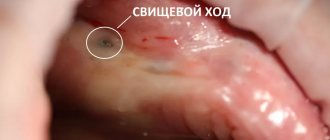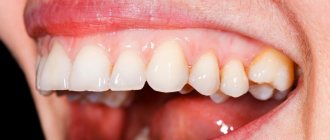Pain after tooth extraction: how long does it last, and is it normal? These and other questions concern patients after dental procedures. Pain syndrome is normal in several cases: early postoperative period, complex removal, simultaneous implantation.
Normally, pain can persist from several days to a week, and its intensity should decrease. The appearance of symptoms such as increased pain, swelling, inflammation, bleeding or the appearance of purulent exudate is a reason to immediately consult a doctor.
Causes of pain
The further a tooth is in the row, the more difficult it will be to remove, as it has a more extensive root system. This often leads to inflammation and improper healing of the hole. According to statistics, complications are most often diagnosed after the removal of wisdom teeth (eight teeth). Also, the cause of long-term toothache is the lack of experience of the dental surgeon and incorrect removal tactics.
Let's look at the main complications that lead to long-term pain after tooth extraction:
- Bleeding – Bleeding normally stops within 30 minutes of surgery. But in people with diseases of the hematopoietic system, diabetes mellitus, the hole may bleed for several hours. The critical period is the first day. If you experience even slight bleeding during this time, consult your doctor. He will perform additional tamponade, diathermocoagulation or suturing of blood vessels.
- Alveolitis is a common infectious complication that is characterized by inflammation of the soft tissue around the socket. There are aching pains that intensify while eating. As the disease progresses, pain may radiate to the temple and ear on the affected side. Treatment by a dentist is required. Untimely treatment can lead to the development of an abscess and blood poisoning.
- Paresthesia is a loss of sensation that occurs when the mandibular or maxillary nerve is injured. Normally, the numbness goes away within 1 or 2 weeks. To reduce the period, physiotherapeutic methods are used. If discomfort persists for more than a month, you need to contact the dentist.
- Leaving tooth fragments in the wound - foreign objects in the socket interfere with the normal healing process, which leads to prolonged pain and inflammation. Small fragments may come out on their own when rinsing. X-ray diagnostics are required.
- An abscess is a purulent process that occurs in a hole as a result of infection. Accompanied by throbbing pain, fever, headache, and weakness. An opening and drainage of the abscess and antibacterial therapy are required.
- Osteomyelitis is an inflammation of the bone tissue of the jaw. Accompanied by acute pain, unpleasant odor, mobility of adjacent teeth, and swelling of the jaw. Pathological changes in bone tissue are visible on x-rays. In advanced cases, surgical treatment is required. Without treatment, the infection can spread to the soft tissues of the face and neck.
The most common cause of long-term pain after tooth extraction is the absence of a blood clot, that is, a “dry socket.” This pathology is often observed in older people, smokers and in patients with hormonal disorders.
Edema and swelling
This is also a temporary phenomenon, especially often occurring after surgery in the lower jaw. The most severe swelling is observed on the second day - this is normal. Cold compresses or ice should be applied to the patient's cheek.
After extraction, swelling, severe inflammation and pain in the ear occur
There is severe pain when opening the mouth after this type of intervention due to inflammation of the mucous membranes. After two or three days the pain decreases. After a week it goes away completely.
A hematoma sometimes occurs on the cheek on the side where the tooth was removed. This is usually caused by mechanical damage due to wisdom tooth extraction. This can be found in patients with arterial hypertension. It goes away in about 3-5 days.
- How long does it take for drugs to leave the body?
How to relieve pain at home
For the first 2–3 days, pain and discomfort are a normal reaction of the body to injury. When removing sevens or eights (wisdom teeth), pain can be felt for up to 5 days. In addition, it can cover the entire jaw and radiate into the ear. This is normal if the pain decreases over time.
To speed up the gum restoration process, it is recommended:
- Do not apply heat to the painful jaw area. It is better to apply a cold compress, which will relieve inflammation and stop bleeding.
- Try not to eat on the injured side; food and drink should be at a comfortable, warm temperature.
- Rinse your mouth after every meal. It is better to use herbal decoctions with an antiseptic effect. It is also advisable to use pharmaceutical antimicrobial agents for rinsing.
- Until the hole has healed, do not use aggressive mouth rinses and toothpastes.
- Do not remove the blood clot or touch the socket.
If the pain is severe, you can take analgesics or non-steroidal anti-inflammatory drugs. They will not only reduce pain, but also relieve swelling.
Time frame for complete healing after tooth extraction
It is important to understand that tooth extraction is a full-fledged dental operation, after which a period of rehabilitation is required. During this time, the hole heals, pain decreases and the injured area of the gum is restored. There are several main stages:
- The first week after surgery is the period during which the hole is completely filled with granulation tissue. In the first days, a blood clot forms, and on days 4–5, normal granulation forms on top of it. Soreness, swelling, and redness begin to decrease normally within 3–4 days.
- Second week – the recovery process continues. On the 8th day, headaches and toothaches completely disappear, the local temperature of the gums normalizes, and the tooth socket heals. On days 10–14, the process of bone tissue restoration begins.
- The next 1–2 months are the period when intensive growth of bone tissue occurs. It completely fills the hole. However, the bone will become sufficiently strong no earlier than 5–6 months after tooth extraction.
The duration of rehabilitation depends on many features. So, molars have larger roots, which may have an irregular structure, so when they are removed, a large hole remains. Recovery can be lengthy even after removal of incisors or fangs if a cyst or abscess is discovered. It is important to monitor your well-being, but headaches in the first week after surgery are considered a normal reaction of the body.
When a doctor's help is needed
If you have the following symptoms, you should contact your dentist:
- if bleeding from the socket does not stop within 24 hours after tooth extraction;
- increased body temperature, weakness, headache;
- swollen lymph nodes;
- heavy bleeding, in which the patient has to change the cotton swab every 10-15 minutes;
- redness and swelling of the soft tissues near the hole, which are accompanied by acute, ongoing pain;
- severe numbness of the jaw;
- mobility of adjacent teeth;
- the appearance of bad breath;
- purulent discharge from the socket;
- formation of an abscess on the gum;
- liquid nasal discharge can occur when the maxillary sinus is injured as a result of difficult removal.
All these conditions require qualified medical care.
Paresthesia after surgery
Paresthesia occurs if a nerve is damaged during tooth extraction. It is characterized by numbness of the facial muscles or tongue. This usually happens after removal of the figure eights, because they are located in close proximity to the facial nerves. Typically, this symptom goes away on its own within one or two weeks, but in severe cases it can linger for a long time or become permanent. This is a fairly rare consequence of the operation.
Paresthesia occurs infrequently
Treatment methods
The treatment regimen depends on the cause of the pain, symptoms and severity of complications. After examination, X-ray diagnostics are used to clarify the diagnosis. It allows you to assess the condition of bone tissue and identify the presence of tooth fragments or root remains in the wound.
- Local treatment
Includes tight tamponade, use of a hemostatic sponge for heavy or prolonged bleeding. To relieve inflammation in the absence of complications, the doctor prescribes rinsing with antiseptics and using ointments with an analgesic effect. Aerosols with antimicrobial properties are effective for stomatitis.
- Drug therapy
Includes taking antibiotics for severe extractions, as well as for wisdom teeth removal. In case of loss of sensitivity (paresthesia), vitamin B complexes in capsules or injections are prescribed.
- Physiotherapeutic methods
UHF courses, electrophoresis, and microcurrent therapy help to cope with pain. On average, 10 sessions are recommended. This treatment is prescribed after the hole has healed.
- Surgery
If purulent contents are present, the abscess (abscess) is opened and cleansed. Turunda with a medicinal composition is placed in the wound. In case of a hematoma (accumulation of fluid or blood), an incision is made in the gum under local anesthesia and a drainage is installed. It helps drain the contents of the hematoma. After cleaning the wound, the doctor applies stitches.
You should not let the pathological condition progress and delay it until further surgery. A timely visit to the dental office will allow you to use gentle medicinal treatment methods.
Types of otitis
Depending on the direction of the pain, it is customary to distinguish 3 types of otitis: external, middle and internal otitis.
Otitis externa most often appears as a result of mechanical damage to the auricle or external auditory canal. The following symptoms are characteristic of external otitis of the ear: aching, dull pain, swelling of the ear, and a slight increase in temperature.
Otitis of the middle ear is an inflammatory disease of the air cavities of the middle ear: the tympanic cavity, the auditory tube and the mastoid process.
Internal otitis is untreated otitis media of the middle ear. With internal otitis, inflammation of the inner ear occurs and the entire vestibular apparatus is damaged.
Prevention of complications
Tooth extraction is a radical measure when other treatment methods have proven ineffective. To avoid long subsequent recovery, you must follow your doctor's recommendations.
In the first hours after the procedure, do not smoke or eat. These are important rules that many people ignore, which leads to infection in the socket.
On the day of tooth extraction, do not actively rinse your mouth.
This may damage or flush out the blood clot that helps the socket heal. Do not drink alcohol until the wound is completely healed. Alcohol increases bleeding. Avoid strenuous physical activity, and visiting public places such as swimming pools and lakes is also prohibited. It is impossible to warm up the injured jaw area, so in the first week do not visit the sauna, bathhouse or take a hot bath.
Stages of the procedure
Simple extirpation is carried out using forceps, consisting of cheeks, a handle, and a lock. It is performed if the coronal part is well preserved and there are no various complications. Incisors and canines on the upper jaw are removed with straight forceps, on the lower jaw - curved at an angle of 90 degrees. S-shaped instruments are used to extract premolars and molars.
Removing an upper wisdom tooth is easier than on the lower jaw, since it has an even, small root, so a simple operation is performed if there are no complications. The lower jaw bone is denser and more massive, and the root part of the figure eight is complex.
A simple extraction consists of several steps:
- local anesthesia;
- antiseptic treatment;
- application of forceps followed by advancement of the cheeks under the gums and fixation;
- rocking, dislocation and extraction of a dental unit from the socket.
Complex extirpation requires the use of several different instruments, takes a longer time, injures nearby tissues, is dangerous for complications, and the rehabilitation process lasts longer. Pain relief during tooth extraction, especially eights, can be general. The surgeon uses a scalpel or laser, drill, elevator, excavator, and other instruments.
Step-by-step complex removal:
- local or general anesthesia;
- antiseptic treatment;
- dissection of the gums, separation of the flap from dental and bone tissues;
- if necessary, drilling or cutting off part of the bone, dividing the root into several fragments;
- extraction of a dental unit in whole or in parts;
- bleeding stop;
- application of antibacterial and anti-inflammatory drugs;
- suturing the gum.
To stitch soft tissues, self-absorbing or non-absorbable threads are used, which are removed after 7-10 days.











